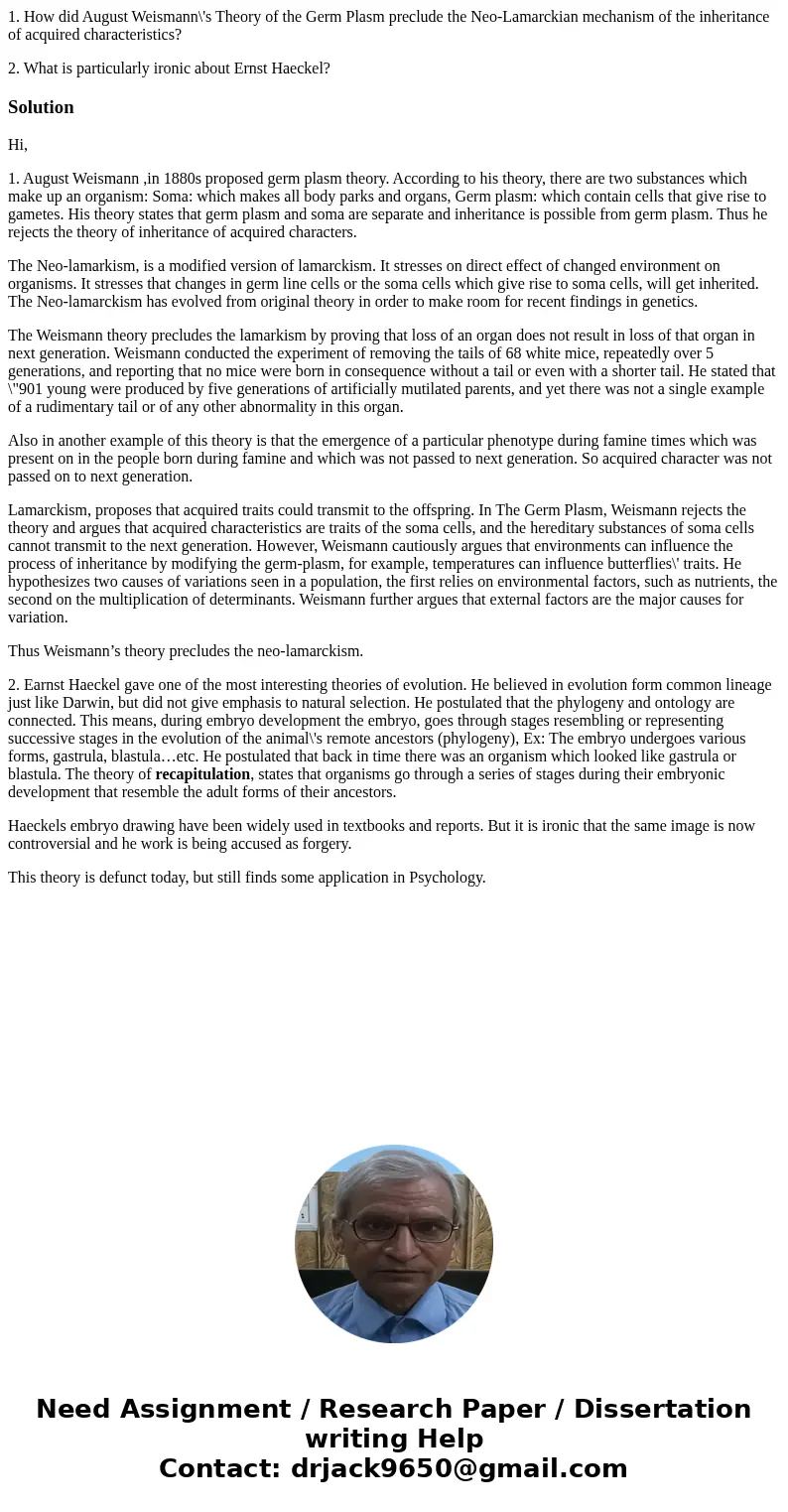1 How did August Weismanns Theory of the Germ Plasm preclude
1. How did August Weismann\'s Theory of the Germ Plasm preclude the Neo-Lamarckian mechanism of the inheritance of acquired characteristics?
2. What is particularly ironic about Ernst Haeckel?
Solution
Hi,
1. August Weismann ,in 1880s proposed germ plasm theory. According to his theory, there are two substances which make up an organism: Soma: which makes all body parks and organs, Germ plasm: which contain cells that give rise to gametes. His theory states that germ plasm and soma are separate and inheritance is possible from germ plasm. Thus he rejects the theory of inheritance of acquired characters.
The Neo-lamarkism, is a modified version of lamarckism. It stresses on direct effect of changed environment on organisms. It stresses that changes in germ line cells or the soma cells which give rise to soma cells, will get inherited. The Neo-lamarckism has evolved from original theory in order to make room for recent findings in genetics.
The Weismann theory precludes the lamarkism by proving that loss of an organ does not result in loss of that organ in next generation. Weismann conducted the experiment of removing the tails of 68 white mice, repeatedly over 5 generations, and reporting that no mice were born in consequence without a tail or even with a shorter tail. He stated that \"901 young were produced by five generations of artificially mutilated parents, and yet there was not a single example of a rudimentary tail or of any other abnormality in this organ.
Also in another example of this theory is that the emergence of a particular phenotype during famine times which was present on in the people born during famine and which was not passed to next generation. So acquired character was not passed on to next generation.
Lamarckism, proposes that acquired traits could transmit to the offspring. In The Germ Plasm, Weismann rejects the theory and argues that acquired characteristics are traits of the soma cells, and the hereditary substances of soma cells cannot transmit to the next generation. However, Weismann cautiously argues that environments can influence the process of inheritance by modifying the germ-plasm, for example, temperatures can influence butterflies\' traits. He hypothesizes two causes of variations seen in a population, the first relies on environmental factors, such as nutrients, the second on the multiplication of determinants. Weismann further argues that external factors are the major causes for variation.
Thus Weismann’s theory precludes the neo-lamarckism.
2. Earnst Haeckel gave one of the most interesting theories of evolution. He believed in evolution form common lineage just like Darwin, but did not give emphasis to natural selection. He postulated that the phylogeny and ontology are connected. This means, during embryo development the embryo, goes through stages resembling or representing successive stages in the evolution of the animal\'s remote ancestors (phylogeny), Ex: The embryo undergoes various forms, gastrula, blastula…etc. He postulated that back in time there was an organism which looked like gastrula or blastula. The theory of recapitulation, states that organisms go through a series of stages during their embryonic development that resemble the adult forms of their ancestors.
Haeckels embryo drawing have been widely used in textbooks and reports. But it is ironic that the same image is now controversial and he work is being accused as forgery.
This theory is defunct today, but still finds some application in Psychology.

 Homework Sourse
Homework Sourse